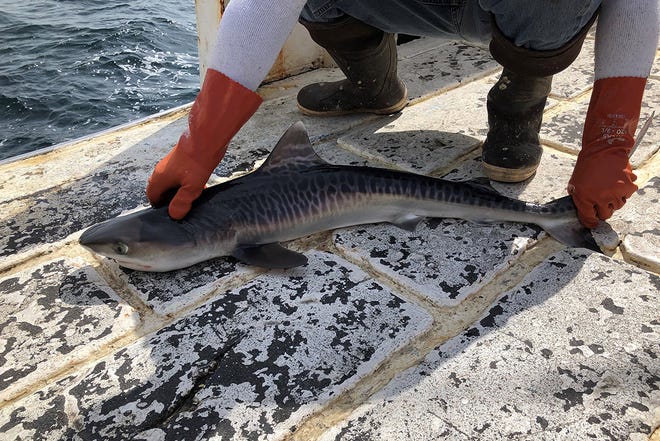Catching and releasing thousands of sharks? Quint would have been superior at this.
Though the “Jaws” captain would have had to lay off the Narragansett lager and focus on the science.
Most likely it can be best that he wasn’t involved in the 2021 Large Coastal Shark Base Longline Survey, a 47-working day endeavor by scientists from the Northeast Fisheries Science Center’s Apex Predators Method, element of the National Oceanic and Atmospheric Administration (NOAA).
According to a NOAA push release, the study captured nearly 2,500 from 11 different shark species along a extend of the Atlantic coast from Fort Pierce, Florida to the North Carolina/Virginia border.

“It is really a fairly intensive procedure,” stated Shelley Dawicki, science writer and communications professional for the Northeast Fisheries Science Centre. Scientists chartered the Eagle Eye II, a fishing boat out of Fairhaven, for the survey and lived aboard the boat for extensive stretches from April 12 to May 28, in accordance to Dawicki.
Fishermen aboard the boat assistance scientists catch the sharks using the longline strategy, exactly where a number of hooks can be put on a prolonged fishing line.
The survey, which is done just about every two or a few many years, provides scientists key information about the relative abundance of coastal shark populations. And spring is the most effective time for the position.
“The study was created to sample coastal sharks just prior to their northward migration together the coastline,” stated Lisa Natanson, in the launch. Natanson, a scientist from the Apex Predators Program, was aboard the study boat and included that rough weather was a problem this calendar year.
Some of the sharks sampled in the survey could be swimming about Cape Cod these days. “A lot of the sharks shift up the coastline,” claimed Dawicki. “Many of these species are discovered in Cape Cod waters.”
The roster of sampled sharks consists of sandbar sharks, dusky sharks, tiger sharks and scalloped hammerhead sharks. Scientists also caught a 9-foot feminine white shark and marked it with a tag furnished by Greg Skomal of the Massachusetts Division of Marine Fisheries. The crew was also reunited with a female sandbar shark that had been tagged 15 yrs ago.

Most sharks swim away from their encounter with the sampling undertaking, but some die during capture, according to the release. This regrettable incidence provides data for quite a few other ongoing research centered on shark food items practices, replica and age and advancement. Backbones have been eliminated from 75 sharks for age and advancement investigate, reproductive information was retrieved from 59 sharks and stomachs ended up examined from 18 sharks.

